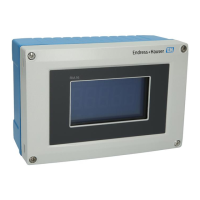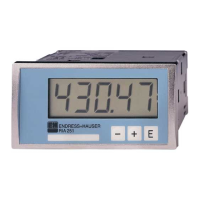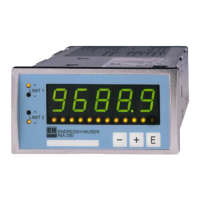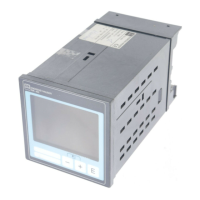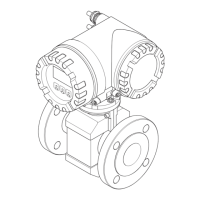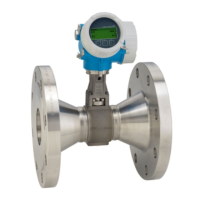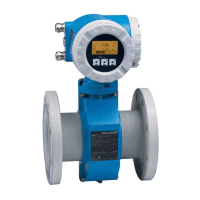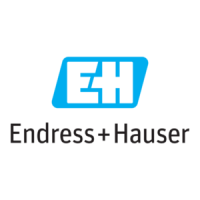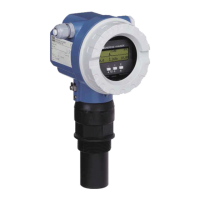Raman Rxn2 Operating Instructions
Endress+Hauser 9
3 Product description
3.1 The Raman Rxn2 analyzer
The Raman Rxn2 analyzer, powered by Kaiser Raman technology, is a for-purpose embedded system with built-in
Raman RunTime control software. Raman spectroscopy provides the chemical specificity of mid-infrared (IR)
spectroscopy and the sampling simplicity of near-IR spectroscopy. By operating in the visible or near-IR spectral
region, Raman spectroscopy allows vibrational spectra to be collected in situ, using fiber-coupled probes, without
sample purging, and without the use of specialty sampling devices.
There are four possible configurations of the Raman Rxn2 analyzer: single-channel, four-channel, hybrid, and
starter. All Raman Rxn2 analyzers employ a unique self-monitoring system to ensure the validity of each analysis.
The analyzer is capable of two-point self-calibration in extreme environments and utilizes self-diagnostics and
spectral correction methods when system calibration is unnecessary. The analyzer's precision is essential for robust
chemometric analyses and calibration transfer between instruments. The Raman Rxn2 suite of analyzers allows for
remote fiber-optic connections to probe sampling points for installation flexibility. And all configurations of the
Raman Rxn2 analyzer are designed for use with the Endress+Hauser line of Raman fiber-optic probes and optics. An
ergonomic mobile cart, including built-in probe and optic storage, is available as an option for all Raman Rxn2
configurations.
3.1.1 The Raman Rxn2 single-channel and four-channel configurations
The Raman Rxn2 single-channel configuration offers one fiber-optic sampling probe connector for the accurate
measurement, collection, monitoring, and analysis of a single sample. The Raman Rxn2 four-channel configuration
provides four fiber-optic sampling probe connectors. Raman Rxn2 single-channel or four-channel configurations are
available with a 532 nm, 785 nm, or 993 nm excitation wavelength laser.
Both the Raman Rxn2 single-channel and four-channel configurations are designed for use in an analytical or
process development laboratory for routine sample measurements, quality assurance, or process development
applications in life sciences, chemical, and food and beverage industries. The four-channel Raman Rxn2 was
designed for customers who need to support process development activities so that they can monitor multiple
vessels. The ability to follow several different reactions at the same time can quickly build process knowledge and
simplify technology transfer from a laboratory into a process environment.
With the Raman RunTime software embedded into the analyzer, the Raman Rxn2 single-channel and four-channel
analyzers meet the needs of both good laboratory practice (GLP) and good manufacturing practice (GMP) governed
areas within the pharmaceutical industry for process analytical technology (PAT) and quality by design (QbD)
applications.
3.1.2 The Raman Rxn2 hybrid configuration
The Raman Rxn2 hybrid configuration is unique because it contains connectors for an Rxn-20 large volumetric probe
and a second, alternate (ALT) backscattered probe. The Raman Rxn2 hybrid configuration is only available with a
785 nm excitation wavelength laser.
The two different probe types enable a variety of applications for solids, liquids, and turbid media. A backscattered
immersion probe is the preferred approach for measuring liquids because of its short focus, optical window, and
bubble-shedding design. The Rxn-20 probe is optimized for large volumetric measurements, enabling focus-free,
non-contact representative measurements of solids or turbid media. The hybrid configuration provides maximal
sampling flexibility for laboratory, quality control, and process development purposes.
With the Raman RunTime software embedded into the analyzer, the Raman Rxn2 hybrid configuration meets the
needs of both good laboratory practice (GLP) and good manufacturing practice (GMP) governed areas within the
pharmaceutical industry for process analytical technology (PAT) and quality by design (QbD) applications.
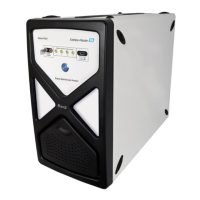
